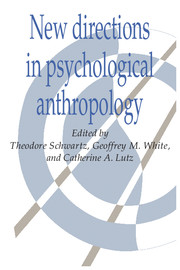Book contents
- Frontmatter
- Contents
- List of contributors
- Introduction
- I Cognition and social selves
- II Learning to be human
- III The body's person
- 7 Putting people in biology: toward a synthesis of biological and psychological anthropology
- 8 Cupid and Psyche: investigative syncretism in biological and psychosocial anthropology
- IV Psychiatry and its contexts
- V Psychoanalytic approaches
- VI Disciplinary perspectives
- Index
7 - Putting people in biology: toward a synthesis of biological and psychological anthropology
Published online by Cambridge University Press: 05 June 2012
- Frontmatter
- Contents
- List of contributors
- Introduction
- I Cognition and social selves
- II Learning to be human
- III The body's person
- 7 Putting people in biology: toward a synthesis of biological and psychological anthropology
- 8 Cupid and Psyche: investigative syncretism in biological and psychosocial anthropology
- IV Psychiatry and its contexts
- V Psychoanalytic approaches
- VI Disciplinary perspectives
- Index
Summary
Introduction
Until recently the rift between biological and psychological anthropology was about as great as it could be. In her chapter for this book (chapter 8), Carol Worthman argues elegantly that the essence of these differences has been the one between Cupid and Psyche – between the views of human behavior as determined and as emergent. Biological anthropology has worked largely from the position that human behavior is determined – for example, by DNA sequences, endocrine substances, neural nets, and other biological phenomena that are relatively easy to describe objectively, count, and measure. Psychological anthropology, on the other hand, has typically seen human behavior as emergent, its essentially ineffable nature contingent on the dialectics of mind, self, and society.
This rift between biological and psychological anthropology, however, has not always been so formidable. Freud and Piaget, for example, each began his life's work because he saw implications of Darwin's theory of evolution by natural selection for understanding human motivation and thought (for Freud see Sulloway 1982; Leak and Christopher 1982; MacDonald 1986; for Piaget see Goodwin 1982; Piaget 1971, 1978). But despite this promising early alliance, biological and psychological anthropology drifted apart. With the emergence of Lionel Tiger and Robin Fox's “zoological perspective” (Tiger and Fox 1966, 1971), and their argument that no matter how cultural we are, we were primates first, and mammals before that, the gulf widened.
- Type
- Chapter
- Information
- New Directions in Psychological Anthropology , pp. 125 - 149Publisher: Cambridge University PressPrint publication year: 1993
- 1
- Cited by



